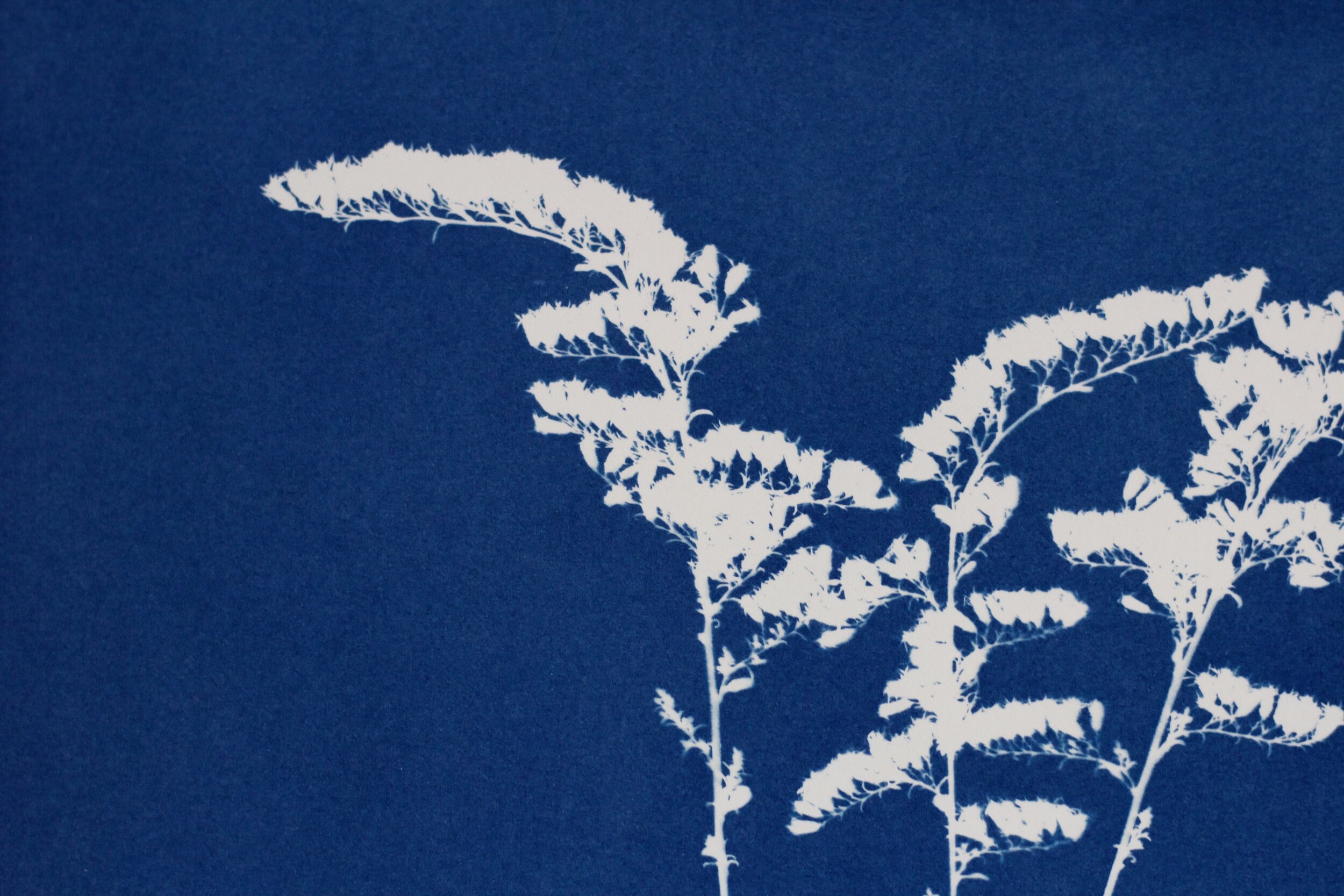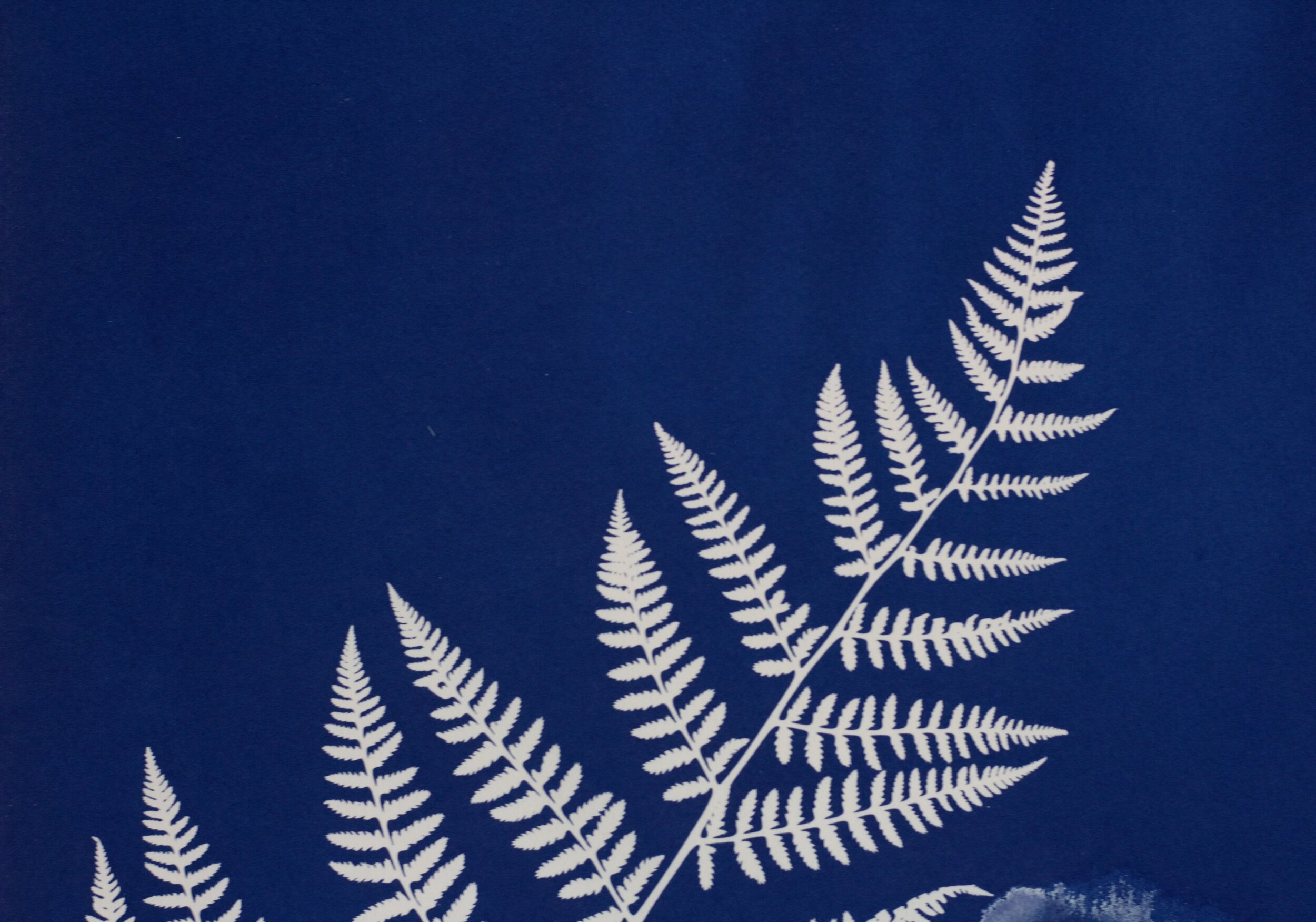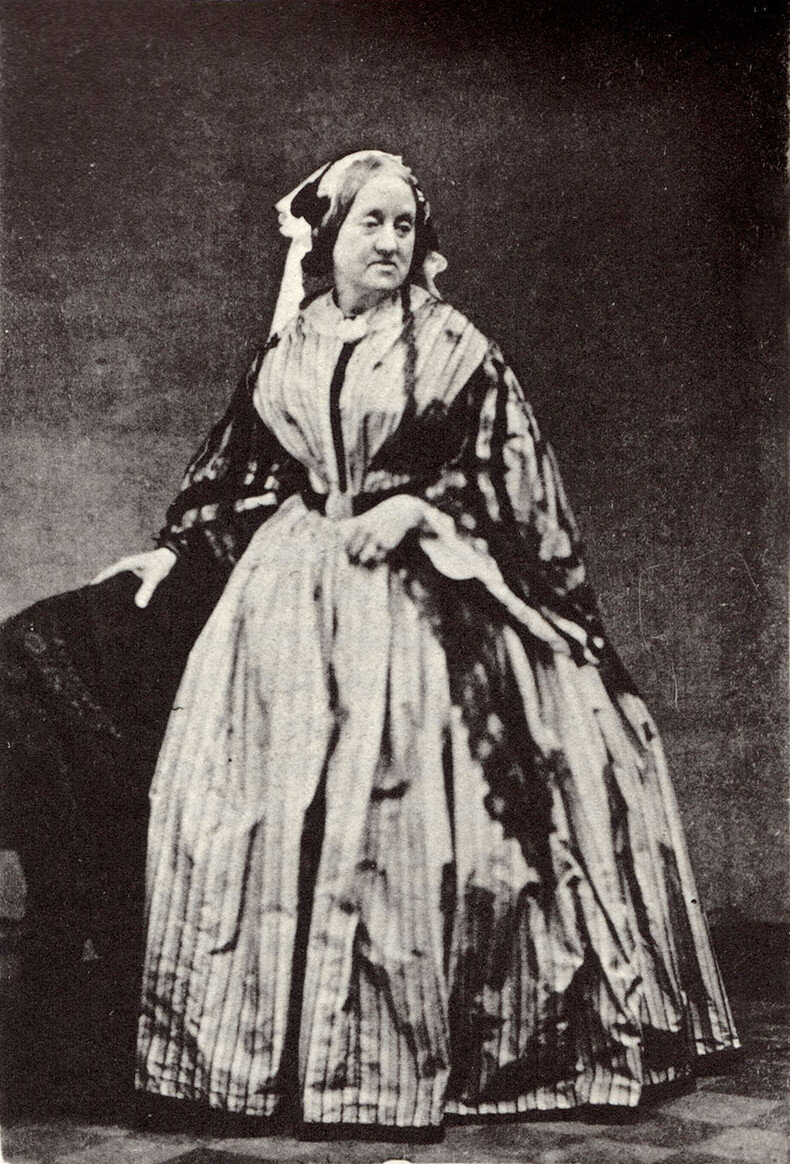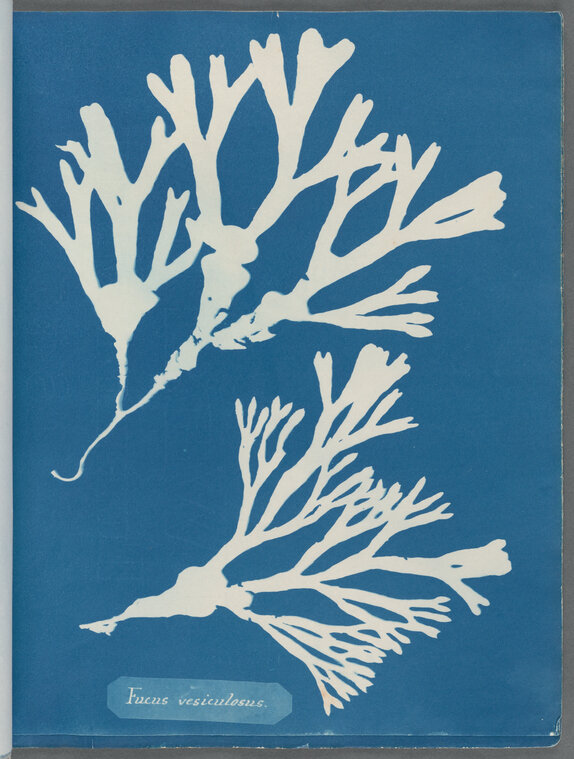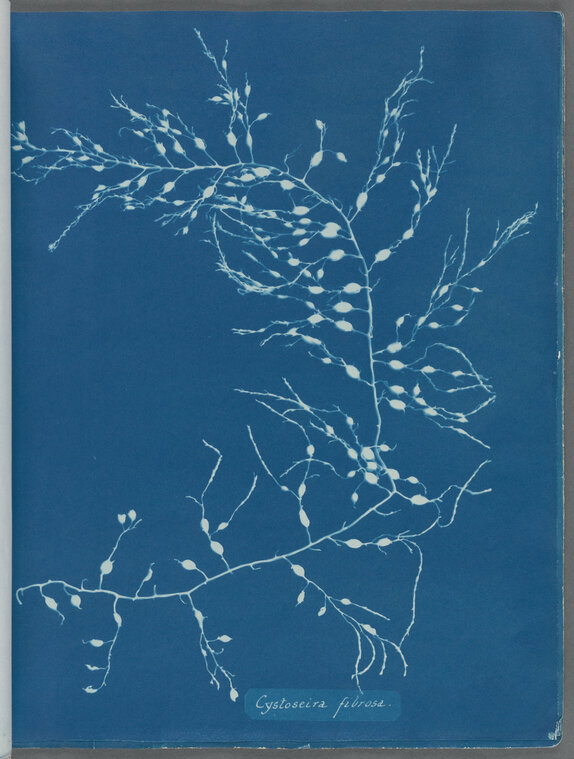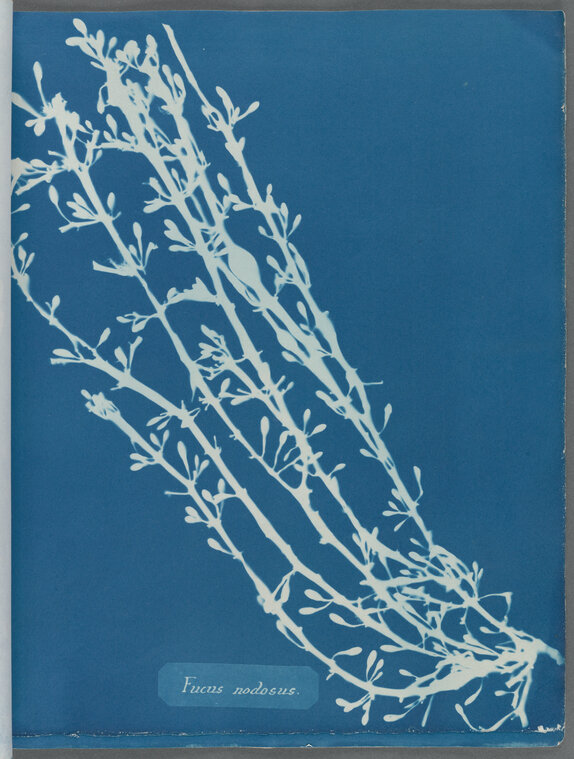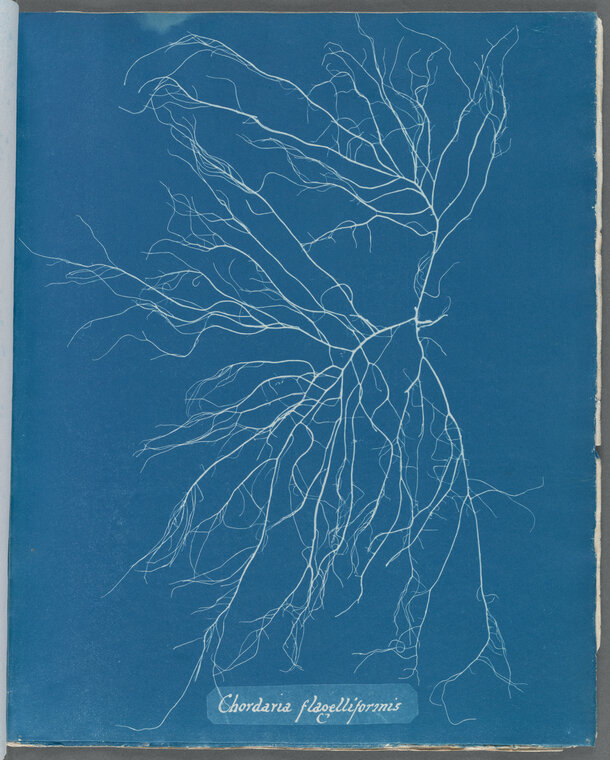What is a Cyanotype?
“We love to contemplate blue, not because it advances to us, but because it draws us after it.”
Do you love the color blue? Its the #1 favorite color of all people on the planet. I am definitely one of those people. I absolutely LOVE the color blue. I tend to get lost in it and just can’t quite get enough of it. My favorites are the deep Indigos and that classic Prussian blue. It was this love of blue that drew me to the cyanotype process in the first place. But the more I experimented with the process, the more I wanted to know exactly how it worked, which ultimately led me to its unique history. I was delighted to discover that the cyanotype process also has deep roots in the botanic world...
So What Exactly Is a Cyanotype?
Technically speaking, a cyanotype is a contact print made by exposing UV reactive chemicals to sunlight. If you break down the word itself, which comes from the Greek…
Cyan=blue & Type=print
So the word cyanotype literally means: Blueprint.
Yep, just like those classic blue plans that architects used to use. In fact, it’s essentially the same process. Before the Xerox machine, blueprints were the only cost effective way to make copies of building plans. Otherwise, you would have to hire a costly scribe to draw multiple copies.
So how exactly did were blueprints made? Well, the plans were drawn in black ink on translucent vellum, which were then placed on top of paper that had been coated with a UV sensitive solution (equal parts ammonium citrate & potassium ferricyanide). The plans were then exposed to sunlight. All areas of the paper exposed to the UV light turned blue due to chemical reaction, but the black ink blocked the UV rays from the chemical reaction, so those areas remained white. The paper was then put in water to wash away the chemicals and Voila! The result was an exact copy of the original--only with white lines instead of black. Architects no longer use blueprints, but the process has recently enjoyed a surge in popularity among artists.
Today, the cyanotype process is classified as a form of alternative photography (alt photography) because, like regular photography, the process uses light to capture imagery.
With cyanotypes though, you don’t use a camera to capture the image, you use the thing itself, which means you are basically capturing the silhouette of the object via a contact print.
Victorian Roots
Astronomer & Inventor
Sir John Herschel (1821-1879) invented the cyanotype process in 1840 in England. Herschel was a brilliant and fascinating character. You can learn more about Herschel’s genius here. He was quite the chemist and was interested creating a process that would help him copy his extensive notes. Photography (which literally means: light drawing) was just getting started, so Herschel is considered an early pioneer in the field.
Botanist & Illustrator
Herschel introduced the process to his friend and neighbor Anna Atkins (1799-1871). Atkins was an accomplished botanist and illustrator, who had compiled an extensive seaweed collection that she wanted published. But the task of illustrating 1,500 unique specimins was daunting to say the least!
When she learned about the cyanotype process, she soon realized she had found the perfect way to document her collection. And the rest, as they say, is history. Atkins is considered one of the first female photographers and was the first person to create a photographic book. Check out some of Atkin’s beautiful work here.
Now that you know a little bit about the cyanotype process and its unique history, tell me what you love about it? Do you get lost in that deep ocean blue too? Or do you love the way the process captures the dance of a plant’s unique form? I’d love to hear your thoughts—so let me know in the comments below.
And by the way, if you are interested in creating your own cyanotypes, be sure to check out my cyanotype tutorial here to learn more.



